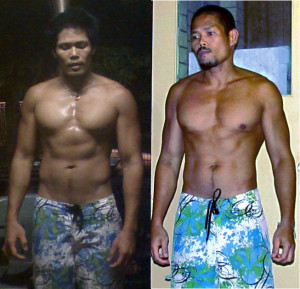Aerobic (cardio e.g. running) exercise is a very popular due to the fact that you lose massive amounts of calories during the exercise itself. Anaerobic (interval training e.g. weight lifting) exercise on the other hand, burns less calories during the workout in comparison, but is partly offset by the higher increase in caloric expenditure that occurs post workout.
Calorie burn continues long after your aerobic or anaerobic workout, a process that is referred to as excess post-exercise oxygen consumption, or EPOC (informally called afterburn). The EPOC effect is greater after a weight lifting session and can last up to 36 hours after workout. Weight training was also found in one study to result in greater fat loss (subcutaneous), even though the subjects expended fewer than half as many calories during exercise. Running is a great way to lose weight, but the weight you lose is a combination of both muscle and fat.
Running causes you to perspire heavily at an average rate of 2.8 litres per hour. A myriad of nutrients are lost in the sweat including calcium and iron, as well as placing severe demand on both the cardiovascular and thermal regulatory systems. Weight training, in contrast, doesn’t cause you to sweat as much, so there’s less stress on your body and you don’t lose as much nutrients in comparison.
I love both aerobic and anaerobic workouts. In the past I used do a lot of running, 3 times a week (5kms each) followed by sit ups which took about 30 minutes, and I supplemented this with a 30 minute light weight training 3 times a week. My workout would average 3 hours per week. I was dog-tired so I needed a change. I eventually changed my routine to 30 minute weight lifting workout (no cardio or situps) 3 times a week which average to about 1.5 hours per week. I’ve effectively halved my workout time but I got more energy and strength as a result.

Aerobic centric (running) workout result on the left compared to Anaerobic training (weight lifting) result on the right.







